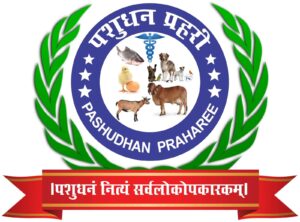APPLICATION OF CLAMP CASTRATOR OR BURDIZZO DEVICE FOR CASTRATION PRACTICES IN FARM ANIMALS FROM ANIMAL WELFARE PROSPECTIVES
What is clamp castration?
This method involves applying a clamp (also known as a bloodless castrator or Burdizzo device) to the neck of the scrotum. This crushes the spermatic cords, stops the blood supply and destroys the nerves, causing the testicles to waste away.
To maintain the blood supply to the scrotum so that it does not waste away, you need to apply the clamp correctly and for the right length of time, i.e. long enough to destroy the relevant tissues but not too long that it affects the scrotum.
In the world of animal husbandry and veterinary medicine, advancements continue to transform the way we care for our four-legged companions. One such breakthrough innovation is the Bloodless Burdizzo Castrator, a humane and effective solution for the age-old practice of castrating animals. This article explores the significance, benefits, and the impact of this remarkable tool in animal welfare.
The Traditional Method
Castration is a common practice in animal farming, primarily used to control breeding and manage the health and behavior of livestock. Historically, the process involved the use of surgical methods or even the more traditional, bloodier Burdizzo clamp. This method, although effective, came with several downsides, including blood loss, risk of infection, and a longer recovery time for the animals. These issues have long been a concern for both animal welfare advocates and farmers seeking more efficient and humane alternatives.
Castration is a common management practice in farm animals to control aggressive behavior, improve meat quality, and prevent unwanted breeding. Various methods, including surgical, immunological, and bloodless techniques like the Burdizzo clamp, are used for castration. However, concerns regarding animal welfare and pain management have led to legal restrictions and ethical considerations regarding the use of these methods.
Working Principle of Burdizzo Castrator
The Burdizzo castrator is a bloodless castration device that works by crushing the spermatic cord without breaking the skin. The device applies a strong compressive force that disrupts blood supply to the testes, leading to their atrophy over time. The method is considered less invasive than surgical castration but still raises significant animal welfare concerns.
Animal Welfare Concerns
- Pain and Stress: Although the Burdizzo method avoids open wounds, the crushing force results in significant acute pain and distress in animals, which can persist for hours or days.
- Ineffectiveness: If not applied correctly, the procedure may be incomplete, leading to only partial castration or testicular regeneration, requiring a repeat procedure.
- Lack of Anesthesia or Analgesia: Traditional Burdizzo castration is often performed without anesthesia, which is now deemed unacceptable under modern animal welfare standards.
- Post-Procedural Complications: Potential issues include inflammation, swelling, and secondary infections.
Legal and Ethical Aspects in India
In India, animal welfare is governed by the Prevention of Cruelty to Animals Act, 1960, and guidelines set by the Animal Welfare Board of India (AWBI). Recent legal frameworks and welfare recommendations have raised concerns about the Burdizzo method due to its painful nature. Key points include:
- The Performing Animals (Registration) Rules, 2001 emphasize humane handling of animals, discouraging painful procedures without anesthesia.
- The Prevention of Cruelty to Animals (Care and Maintenance of Case Property Animals) Rules, 2017 advocate for minimizing pain and distress in all livestock handling procedures.
- Recent Welfare Regulations discourage painful castration techniques and promote alternative methods that include pain mitigation strategies.
Recommended Alternatives
Considering the welfare concerns associated with the Burdizzo castrator, the following alternatives are recommended:
- Surgical Castration with Pain Management: Performing castration under local anesthesia and post-operative analgesia significantly reduces animal suffering.
- Immunocastration: A hormone-based alternative that reduces testosterone levels without physical intervention.
- Chemical Castration: Involves the injection of chemical agents to induce testicular atrophy, though this method is still under study.
The Bloodless Burdizzo Castrator
Enter the Bloodless Burdizzo Castrator, a device designed to address the limitations of traditional castration methods. This innovative tool, which has gained widespread acceptance in the animal industry, offers a plethora of advantages over conventional techniques.
Minimal Blood Loss: As the name suggests, the bloodless Burdizzo castrator causes minimal blood loss during the procedure. It achieves this by crushing and sealing the blood vessels and spermatic cord, preventing excessive bleeding. This not only reduces the risk of infection but also ensures a safer and quicker recovery for the animal.
Improved Animal Welfare: The bloodless method is far less traumatic for the animal. With reduced pain and discomfort, it significantly improves their overall well-being during and after the procedure. This is a major win for those advocating for better animal welfare standards.
Enhanced Efficiency: Using the Bloodless Burdizzo Castrator is a quicker and less complex process compared to traditional castration methods, making it a more efficient choice for farmers and veterinarians.
Reduced Risk: With its straightforward design and operation, the bloodless Burdizzo castrator reduces the risk of human error during the procedure, ensuring the safety of both the operator and the animal.
Wider Applicability: This innovative tool is not limited to a particular animal species. It can be used for castrations in cattle, sheep, goats, and other livestock, making it a versatile solution for various farming operations.
Impact on Animal Welfare
The Bloodless Burdizzo Castrator is not just a technological advancement but a game-changer in the world of animal welfare. It aligns with the growing ethical concerns of our society, highlighting the importance of minimizing the suffering of animals in our care. By reducing pain, distress, and complications associated with traditional methods, this device promotes a higher standard of care for animals.
The clamp must be applied twice, with each application taking at least 10 seconds.
Advantages of clamp castration:
- Can be used on lambs up to three months of age (on farm), and on older lambs by a vet
- Ewes and rams can be managed together
- The clamp is a one-off purchase
Disadvantages of clamp castration:
- Can be difficult to carry out correctly and effectively
- Requires training
- More time-consuming than rubber ring castration
- No visual indication of effectiveness – risk of incomplete castration
- Short-term moderate to severe pain for the lamb
- Possible increased feed intake of castrated lambs
Conclusion
The Bloodless Burdizzo Castrator is a shining example of how innovation can revolutionize age-old practices in the field of animal husbandry and veterinary medicine. Its minimal blood loss, reduced pain, and enhanced efficiency make it an attractive choice for farmers and veterinarians worldwide. More than just a tool, it represents a commitment to animal welfare and a brighter future for our animal companions. As technology continues to advance, we can expect even more humane and efficient solutions to benefit both animals and those who care for them. While the Burdizzo castrator offers a bloodless alternative to surgical castration, its use raises serious animal welfare concerns, particularly regarding pain management. In light of recent legal developments in India, its application is increasingly being questioned, and farmers are encouraged to adopt more humane and scientifically backed methods of castration that align with animal welfare regulations. Ensuring proper anesthesia and analgesia, along with following ethical guidelines, is essential for maintaining livestock health and productivity while complying with legal standards.
NB- The central government has notified the Prevention of Cruelty to Animals (Animal Husbandry Practices and Procedures) Rules, 2023, which mandate that procedures like castration of bulls, horses, and other animals be done with the involvement of a registered veterinary practitioner and using general and local anaesthetics instead of the current prevalent painful methods, such as forcing a bull to the ground and using a Burdizzo castrator without any anaesthesia or painkillers to crush the spermatic cord which consists of blood vessels, nerves, and Vas deferensconnected to the testes or even the testicles are crushed in order to cut off the blood supply and cause the testicles to atrophy. The Rules also encourage the breeding of polled (naturally hornless) cattle over dehorning and the use of face halters and other humane methods over nose roping, prohibit cold and hot branding on live tissues, and prescribe a clear procedure for euthanasia for ill animals to end their suffering. The Rules also put in place pain reduction methods for dehorning and nose roping when they occur.
Though Section 11 of The Prevention of Cruelty to Animals Act (PCA), 1960, defines the acts which amount to treating animals cruelly, sub-section 3 provides an exception and consequently deems certain animal husbandry procedures, including the dehorning of cattle and castration, branding, and nose roping of any animal, not cruel, when done in a “prescribed manner”. Further, sub-section 3(c) also allows “the extermination or destruction of any animal under the authority of any law for the time being in force” as an exception. The decision of the government to define the “prescribed manner” for painful animal husbandry procedures and euthanasia for cattle and other animals under the PCA Act, 1960, follows advisories issued by the Animal Welfare Board of India and the Department of Animal Husbandry and Dairying, appeals made by PETA India, and a public interest litigation filed by the group in the Delhi High Court.
The Rules prescribe the method to be followed for euthanasia – Current crude methods of killing such animals include injecting chemicals that painfully stop the functioning of the heart and lungs while animals are still conscious, suffocating them to death in plastic bags, and burying or burning them alive.
Non-adherence to the notified Rules shall be punishable under sections 11, 12, and 13 of the PCA Act, 1960.
Legal requirements for common surgical operations on farm




